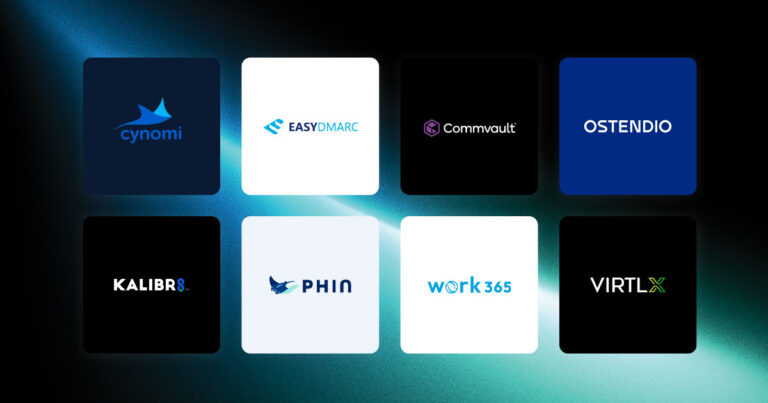As technology continues to quickly evolve, it’s tougher than ever for small and medium-sized businesses (SMBs) to keep up. That means there’s never been a better time to be a managed services provider (MSP) that supports SMBs with their IT needs. However, many MSPs face challenges when it comes to building and growing their businesses. It can be as difficult to get started as it is to move past a plateau once you’ve established your business and reach your desired MSP business valuation.
Here, we’ve gathered some strategies, tactics, and information you can use to maximize your MSP business’ profitability and valuation to get you on the road to achieving business maturity.
Overcoming common MSP growth challenges
Growing your business comes with its share of challenges, no matter what stage it may be in. It’s important to understand where your company stands on the path to maturity. We’ve defined four stages that MSPs generally fall into as well as strategies you can implement to overcome each stage’s challenges.
Stage 1: Establishment
Stage 1 is the Establishment phase, which begins with all employees reporting to the owner. Typically, at this stage, the business could have an L1 engineer, up to three L2 engineers, and a part-time bookkeeper, while the owner acts as dispatcher.
At this stage, there typically is no defined mission, vision, or strategy. It might be more of a hobby or side hustle at this point rather than something long-term. This stage often faces challenges such as funding, managing time effectively, and building a scalable business model.
To overcome these challenges, you should employ tactics such as hiring more engineers, buying and implementing a professional services automation (PSA) tool to organize your operations and make them more efficient, and a remote monitoring and management (RMM) tool to enable reviewing your clients’ IT systems off-site. Also, consider adding a bookkeeping role, who may work part-time.
Stage 2: Enablement
Stage 2 is the Enablement stage, in which the business starts expanding its client base, revenue, and team. The challenges at this stage may include managing rapid growth, hiring the right talent, and streamlining operations.
The MSP business often reaches this point when the owner has too many people reporting directly to them. Following the rule of seven, in which the owner of a business shouldn’t have more than seven direct reports, lest they become a bottleneck to getting work done efficiently, the owner will often promote their best engineer to the position of service manager, who oversees a dispatcher and L1 and L2 engineers.
For strategies to address these challenges, MSP owners can find a business coach and join an owner Peer Group. For the service manager, hiring an operations coach, joining a service executive Peer Group, and developing concrete processes and procedures can help.
In-house tactics to implement these strategies include standardizing service tickets (with the stages being triage, dispatch, time entry, and ticket closing). Client-facing tactics include having the service manager develop the scope of projects, using more documentation, and offering clients solutions including backup management, patch management, and security services.
Stage 3: Expansion
Stage 3 represents the Expansion stage, where the business has survived establishing itself and initial growth and is now looking to capture more market share. In a stage 3 organization, the owner/CEO has the service manager, bookkeeper/HR, and account manager reporting to them, with a managed services manager and professional services manager reporting to the service manager and engineers a step below.
In this stage, the owner is still very close to day-to-day operations to keep the service manager accountable, while an account manager helps the owner with sales so they can keep “feeding the machine.” Gross margin is divided between managed services and professional services at this stage, while the service manager owns overall services gross margin. Challenges in stage 3 include market saturation, struggling to innovate with new products and services, and increased competition.
Foremost among your strategies at this stage should be building out your company culture. You’ll need to define your mission statement, vision statement, and core values to build accountability so that you and your employees know the “why” behind the “what” of your business. In addition, you should productize your service offerings, work to manage margins and increase financial transparency, and define your scorecard, which is a limited set of numbers used to run the business that often includes number of leads, sales figures, utilization rate, number of jobs completed, and ticket-opened-to-completion ratio.
Among tactics at this stage, it’s crucial to adopt a business operating system, which is akin to a playbook that lays out roles and responsibilities for each of your employees. Having a business operating system helps you improve accountability, avoid miscommunication and conflicts that can arise without a plan in place, and keep everyone working toward common goals so that you can continue scaling up. If needed, bring in a business coach to help. In addition to developing a business operating system, it’s important to establish standard meeting rhythms, leverage business data, stick to a budget, standardize your technology stack, manage client efficiency and profitability, and have team leads who develop a scope for each project.
Stage 4: Enhancement
At stage 4, MSPs have reached the Enhancement stage. They have established brand awareness with their clients and a strong presence in their target market. Stage 4 MSPs likely have a marketing manager, sales manager, CFO, and service director, while the role of account management moves into service, frequently as a vCIO (virtual chief information officer) within a pod of engineers that can be replicated as you scale. At this stage, challenges include reaching market saturation and finding ways to continue scaling and innovating.
Strategies to combat these challenges include making sure your business operations system is in place and being closely followed, establishing clear roles and responsibilities at all levels, developing a deeper balance sheet and P&L positioning, periodically reviewing business plans, and developing strategic partnerships. Stage 4 tactics include developing promotions and a path to leadership, offering compensation based on budget attainment, transitioning to pods, and fully committing to vCIO and business reviews.
Developing an exit plan
A crucial part of your business plan should also be an exit plan. If your goal is to become profitable and one day sell your business, you should run your MSP business that way from day one. However, it’s been shown that 88% of business owners do not have an exit plan, and they often misjudge the value of their company by a significant margin. To avoid unrealistic value expectations, it is crucial to set realistic and attainable targets.
What is business valuation?
Valuation, or the process of determining what your business is worth, is a mix of art and science, and it ultimately depends on what a buyer is willing to pay. You should consider not only your overall revenue size but the diversity of all your revenue streams, including product resale, cloud resale, and the different types of services you offer, such as technical, managed, professional, and shared infrastructure. You’ll also need to take into consideration your business model, the number of principals, adjusted EBITDA (earnings before interest, taxes, depreciation, and amortization), geography, growth, consistency, client satisfaction, and cash on hand and debt.
Before you determine what your business valuation is, you should ask yourself what you would like that number to be and when you want to hit that target. You have to balance forming a realistic goal versus an aggressive one, and then determine what is an attainable middle ground. Once you have that target, it’s time to get buy-in from your team and determine how to reach it.
How to achieve business valuation goals
To achieve valuation goals, it’s crucial to build a viable roadmap. This can consist of a multiyear timeline and process document that gets you from where you are to where you would like to be.
For your roadmap, you’ll need to determine who is responsible for each item, when it needs to be completed, and how you’re validating that you’re staying on schedule in order for it to be effective. Consider motivations to keep your team on track, such as implementing an employee stock ownership plan (ESOP), profit sharing, stock options, retention bonuses, and more.
It’s not enough to have a strong roadmap. To follow it correctly, you’ll need to work on constantly improving your processes; correctly classifying revenue, costs, and expenses; minimizing churn; and maximizing and maintaining solid agreements. Regular financial reviews and accountability are essential for tracking progress and making necessary adjustments.
Lastly, building a strong leadership team is critical for achieving business maturity. Developing the next level of leaders in your organization ensures continuity and prepares the business for growth and operational maturity even after the owner exits.
In conclusion
Unlocking business growth and financial success for MSPs requires a comprehensive approach that addresses various aspects of the business. By setting clear valuation goals and scaling your business according to the four stages we’ve laid out, MSPs can position themselves for long-term success.
It’s important for MSPs to continuously evaluate their business, adapt to changing market dynamics, and invest in their team, processes, and technology. With a strategic mindset, a focus on customer value, and a commitment to continuous improvement, MSPs can navigate the challenges of the industry and thrive in a competitive landscape.
To get started on your business plan and get help building a roadmap, you can sign up for Pax8 Academy’s Value Creation Coaching (VCC).





